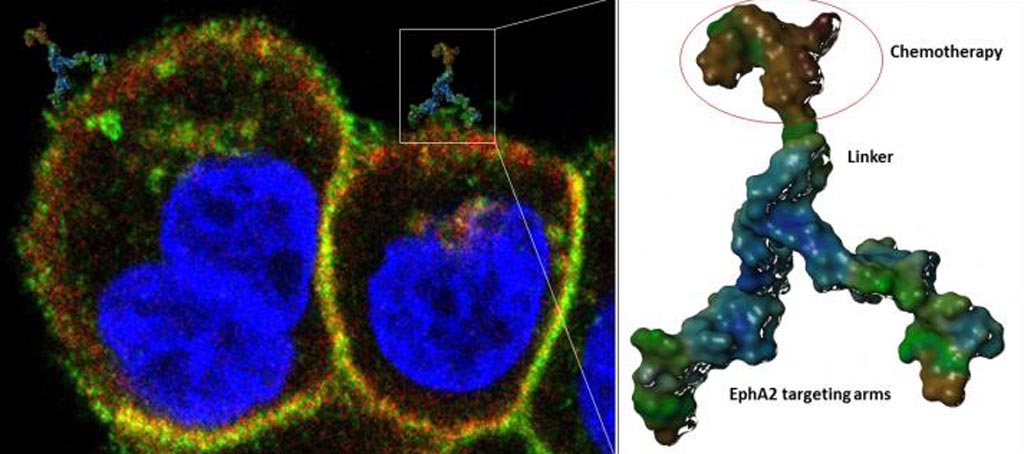Oncogene Used as Drug Transporter to Block Tumor Growth
By LabMedica International staff writers
Posted on 07 Mar 2018
A potent peptide-drug conjugate that targets the EphA2 (ephrin type-A receptor 2) oncogene was shown to reduce circulating cancer cells and metastases in breast cancer models.Posted on 07 Mar 2018
EphA2 overexpression has been associated with metastasis of multiple cancer types, including melanoma, ovarian, prostate, lung, and breast cancer. Investigators at the University of California, Riverside (USA) had proposed employing chemotherapeutic peptide-drug conjugates (PDCs) using EphA2-targeting agents such as the YSA peptide or its optimized version 123B9. While their studies indicated that YSA- or 123B9-drug conjugates could selectively deliver cytotoxic drugs to cancer cells in vivo, the high concentrations of the agents that were required to bind the EphA2 receptor remained a limiting factor in developing these PDC for clinical purposes.

Image: The 123B9 dimeric peptide (right panel) has a scorpion-like shape with two arms that bind to EphA2-expressing cancer cells and a tail (brown) comprising the cytotoxic chemotherapeutic agent paclitaxel. The compound recognizes the surface of cancer cells that are rich in EphA2 (labeled in red in the left panel) and deliver the cytotoxic agent (Photo courtesy of the Pellecchia Laboratory, University of California, Riverside).
In overcoming these limitations, the investigators reported in the February 22, 2018, online edition of the Journal of Medicinal Chemistry that they had prepared a dimeric version of 123B9 capable of inducing receptor activation at nanomolar concentrations. In addition, they demonstrated that conjugation of dimeric 123B9 with the anticancer drug paclitaxel was very effective in targeting circulating tumor cells and inhibiting lung metastasis in breast cancer models.
"Once this novel tumor-homing agent binds to the EphA2 receptor, the oncogene functions as a cancer-specific molecular Trojan horse for paclitaxel, carrying the drug inside the cancel cell, killing the cell, and thwarting metastasis," said senior author Dr. Maurizio Pellecchia, professor of biomedical sciences at the University of California, Riverside. "Without the targeting agent, paclitaxel cannot hitch a ride on EphA2. Because this binding causes EphA2 internalization, we also sought to conjugate 123B9 with paclitaxel and thus direct the drug to migrating cancer cells."
"Our work predicts that reducing the number of circulating cancer cells produces less metastasis," said Dr. Pellecchia. "Indeed, in a second tumor model of metastatic breast cancer, we demonstrated that mice treated with the EphA2-targeting paclitaxel conjugate presented nearly no lung metastases, while a large numbers of lesions were observed in both untreated mice and in mice treated with just paclitaxel. The proof-of-concept studies we have obtained thus far are extremely encouraging, and we are confident that with proper support and efforts we could translate our findings into experimental therapeutics for a variety of solid tumors that are driven by EphA2 overexpression, including breast, lung, prostate, pancreatic and ovarian cancers."














